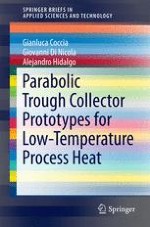This book provides a technical overview of low-cost parabolic trough collector (PTCs) prototypes for low-temperature heat demand. It begins with a comprehensive but concise summary of the state-of-the-art in PTCs, and presents a detailed mathematical model of such systems. Subsequent chapters describe the construction and materials used in the manufacture of PTC prototypes, and offers technical solutions to overcome design problems. Finally, it provides an accessible guide to the standards used to test and evaluate the performance of PTCs. Offering a valuable resource to engineering researchers and practitioners, it is also suitable for students of solar thermal systems, renewable energy and applied physics.
